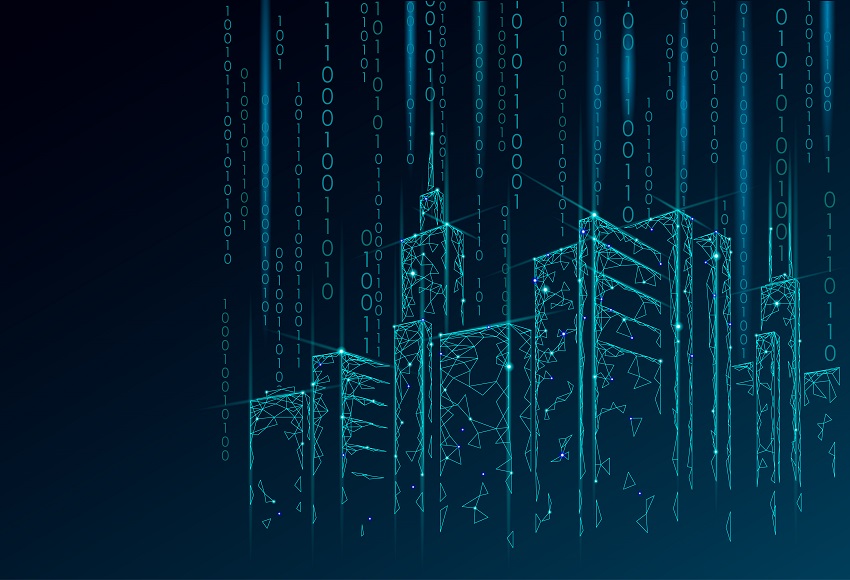A First Step in Attracting & Retaining Commercial Tenants

Adam Benson,
VP of Engineering
BuildingIQ
|
September 2019 |
[an error occurred while processing this directive] |
| The
Digital Twin A First Step in Attracting & Retaining Commercial Tenants |
 Adam Benson, VP of Engineering BuildingIQ |

| Articles |
| Interviews |
| Releases |
| New Products |
| Reviews |
| [an error occurred while processing this directive] |
| Editorial |
| Events |
| Sponsors |
| Site Search |
| Newsletters |
| [an error occurred while processing this directive] |
| Archives |
| Past Issues |
| Home |
| Editors |
| eDucation |
| [an error occurred while processing this directive] |
| Training |
| Links |
| Software |
| Subscribe |
| [an error occurred while processing this directive] |
In 1989, the movie Field of Dreams generated the
famous line: If you build it, they will come. Unfortunately for
commercial property owners, this is not always the case when it comes
to tenants. It is well known that one of the largest challenges for commercial property owners is
attracting and retaining tenants, followed closely by controlling
operations costs and tightening resources.
And unlike in the late 80s when Field
of Dreams debuted, today’s connected world has raised
expectations for what defines an attractive commercial environment.
This mindset challenges property owners, who often lack data-driven
insights about their properties, to know how to make the right
investments to match the demands of the modern commercial tenant.
Investing in the Future: IoT and
the Digital Twin
A growing trend among building owners is to turn to the Internet of
Things (IoT) investments, like wireless temperature and occupancy
sensors, as a way to modernize their facilities while at the same time
realize operational efficiencies. IHS Markit estimates that the number of connected
devices will soar past 125 billion over the next ten years. For the
building industry, this means petabytes of data generated from building
devices can become the backbone of intelligent buildings.
However, this smart building future is not a given. IBM Research found 88 percent of IoT data goes
unused. This means to recognize the most return on IoT investments,
cloud analytics is foundational. And the more IoT data mushroom, the
need for the cloud analytics-based “digital twin” becomes self-evident.
A digital twin is a digital representation of both the elements and the
dynamics of how an IoT device operates and its interconnections in a
physical space. By definition, a digital twin has to apply analytics at
every step and can use these advanced analytics to dynamically
recalibrate to its environment. It feeds on data and improves itself,
the more data it processes, putting all IoT data to use in applications
like buildings.
Optimized Operations with the
Digital Twin
One of the most underutilized IoT investments in commercial buildings
is the building management system (BMS) itself. The BMS was among the
first IoT applications for buildings. When integrators began to add IP
gateways, it effectively turned every device into an Internet host that
could be monitored and controlled. Yet most buildings are run in
maintenance mode or are poorly tuned—unable to modulate their behavior—
let alone able to work around the design constraints of the building
system. It is unlikely that the designer thought about things like
hot-desking; integrated calendaring and room reservations; or laws
mandating reduced carbon emissions. This creates inefficiencies in
building operations and leaves the BMS poorly leveraged as an existing
IoT network without the cloud and digital twinning.
The digital twin addresses these shortcomings by starting with data
from the BMS, and other IoT devices, and layers on context, treating
them as discrete assets to build a map of how the system (building) is
behaving. This brings to light how discrete assets sit inside more
complex systems and how systems are interconnected to other systems.
Now when an issue is identified, the map can be run to determine if
there is inertial impact and validate if the anomaly has undue
influence on the system. Such an effort is practically impossible to
retrofit into an existing BMS, but it is an inherent capability of the
computational power, logic, and artificial intelligence that
cloud-based digital twins can offer.
For example, a BMS system can modulate zone comfort based on the return
air temperature or zone temperature. What it cannot do is understand
that a comfort issue may stem from the number of people temporarily in
the zone or the radiant heat from blinds that are raised, which
normally are not. An occupancy sensor and a window blinds sensor
combined with sun positioning data would provide the additional data to
get to the root cause of the discomfort. No BMS alone can do this
today. But a digital twin connected to the cloud could.
The above example illustrates how the digital twin can reveal how
buildings actually operate in real-time versus their designed behavior.
A digital twin accumulates both granular knowledge at the device level
as well as system knowledge — even cross-system knowledge. Similar to a
facilities team over decades of experience, the digital twin learns and
evolves to improve decision-making, but it does so at an accelerated
pace and with less bias than humans through artificial intelligence,
machine learning and other techniques. It creates and preserves
institutional knowledge within a building by creating a virtual catalog
of how an asset operated and was maintained over 20, 40, 60+ years.
The Digital Twin and AI Engines
The concept of a digital twin highlights the value of trending building
data, storing it for decades and applying algorithms, rules and
processes over the top of it. An artificial intelligence (AI) inference
engine combines a digital twin with tools that identify relationships
across seemingly un-related data sets – it is the flow of these tools
when combined together that identify which assets are contributing to
the energy consumption or operational stance of a building. It will
analyze the strength of those relationships to highlight which data
points (assets) are contributing the most to the consumption of energy
(typically used as a primary indicator of performance/impact) that
period of the query.
In simple terms, AI engines leverage the digital twin and a series of
mathematical and statistical functions and classifications that take
building data sets and create highly normalized relationship maps.
These maps, depending on the richness of data collected, can show
strength and weakness of influence between mechanical components in a
building. The power of an AI engine is in its ability to identify
relationships and influences happening within a building’s mechanical
systems that perhaps was not obvious without the use of big data and
AI. As important when compared to standard industry practices of
identifying faults, AI engines are not limited by reliance upon known,
specific rules for flagging an issue or fault.
[an error occurred while processing this directive]Unlike
other AI techniques, it is not a regression model of past performance
to predict future performance, but more akin to “relationship builder”
that measures the strengths and weaknesses of all data sets to find
which elements of an asset influence one another. It does not need to
know the programming logic or the mechanical flow – it will work that
out on its own. The benefits of this are powerful in that historic
knowledge, gleaned through countless hours talking with the chief
engineer or combing through mountains of documentation sets and
manuals, is not required. The asset and its inherent behavior are
forever captured, annotated and recorded.
This is by no means a replacement of the people and technical services
that manage and tune the mechanical and electronic elements of the
building, but a set of tools and utilities that improve the performance
of the team responsible for its maintenance and upkeep. AI engines on
their own can not fix or resolve issues. It can only highlight and
guide the building facility teams to anomalies and relationships in the
building elements that are not performing at their most efficient.
Artificial intelligence and the digitization of building data will not
necessarily drive energy improvement or operational excellence on its
own. But without requiring new sensors or expensive retrofits, digital
twins and AI engines are about using the team you have, the current
state of the building asset and optimizing it to its full potential to
be more cost-effective.
How to Get Started with the Digital
Twin
The first step on a building’s optimization journey is far simpler than
one would imagine: unlock the data in the BMS. Doing so means building
owners can start to make progress with the digital twin, which is a
low-risk proposition. By definition, the digital twin evolves and
improves over time, so going “all-in” is unnecessary. The BMS has
massive amounts of data that despite decades of effort, is still
largely locked away, in the worst case, or massively underutilized in
the most common case. Many building owners have increased financial
exposure due to contracts that lock down access to data, domain experts
instead of databases, and an inherent bias among facilities teams to go
it alone.
Beginning with the digital twin, an AI engine and the right set of
services built upon it can create appealing, modern commercial spaces
while at the same time generate efficiencies in operations and
de-risking ownership. With this level of return on investment now and
in the future, the new quote for building owners may become something
like: If you optimize it, they will come.
[an error occurred while processing this directive]
[Click Banner To Learn More]
[Home Page] [The Automator] [About] [Subscribe ] [Contact Us]